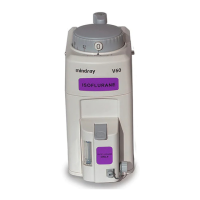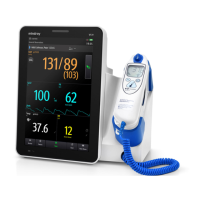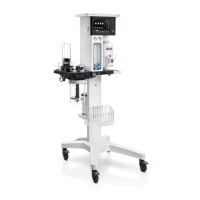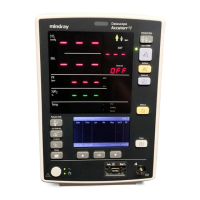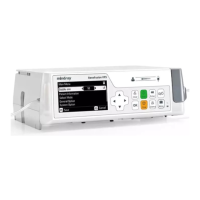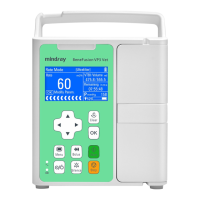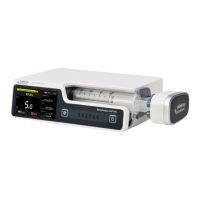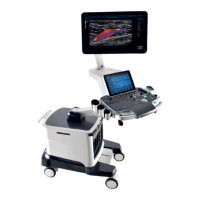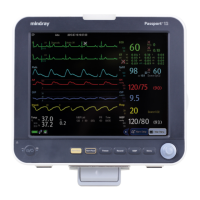V Series Operating Instructions 7 - 3
Alarm Behavior Physiological Alarms
To acknowledge a latched alarm condition, once the condition is resolved, select the Alarm
Acknowledge or Audio Pause button from the Navigator Area.
Apnea Latching
The conditions for apnea latching follow standard latching procedures, however apnea latching is
associated with an apnea alarm condition. This option can be enabled/disabled in the Respiration
dialog’s Apnea tab. The apnea latching factory default setting is Off.
NOTE: Refer to "Configuring Apnea Alarms" on page 10-5 for additional
information.
Audio Alarm Delay
Audio Alarm Delay is the configurable time period required before an alarm sound triggers. Alarm
Audio Delay does not effect the Apnea Alarm, ST Alarms, the non-lethal arrhythmia alarms, or the
lethal arrhythmia alarms. When permitted, this option can be enabled/disabled in the Alarm Setup
dialog.
7.2.3 Physiological Alarm Responses
The alarm responses associated with a physiological alarm are as follows:
7.2.3.1 Alarm Levels
The V 12/V 21 supports three alarm levels. When an alarm level is turned on, the choices available are
high, medium, and low. Alarms may be turned off by selecting the All Off button in the respective
parameter dialog’s Alarms tab. Alarm priorities associated with lethal alarms cannot be changed
from their default value of high. However, all other parameters can be modified. The alarm level used
to configure a parameter defines the alarm severity.
When a parameter’s alarm level is turned off, there are no visual or audio alarm indicators associated
with the alarm event, however Nurse Call is still available if it was enabled in the System setup.
NOTE: Refer to "Configuring the General Tab" on page 26-3 for more
information about Nurse Call.
High Level Alarms
High level alarms are the most severe alarm type. Lethal-arrhythmia alarms (for example, Asystole, V-
Tach, and V-Fib) are automatically configured as high level alarms and cannot be modified. High level
alarm conditions cause the applicable parameter digital tile to flash in red, display a red text message
in the parameter tile message area, use a high level alarm sound, and if configured, the alarm light
indicator flashes in the corresponding alarm response color. A parameters’ alarm limit is configured in
the respective parameter dialog’s Alarms tab.
Medium Level Alarms
Medium level alarms are less severe than high level alarms, and have different visual and audio
indicators. Medium level alarm conditions cause the applicable parameter digital tile to flash in
yellow (for a physiological alarm), display a yellow text message in the parameter tile message area (if
alarm delay is not enabled), use a low level alarm sound, and if configured, the alarm light indicator
flashes in the corresponding alarm response color. A parameters’ alarm limit is configured in the
respective parameter dialog’s Alarms tab.

